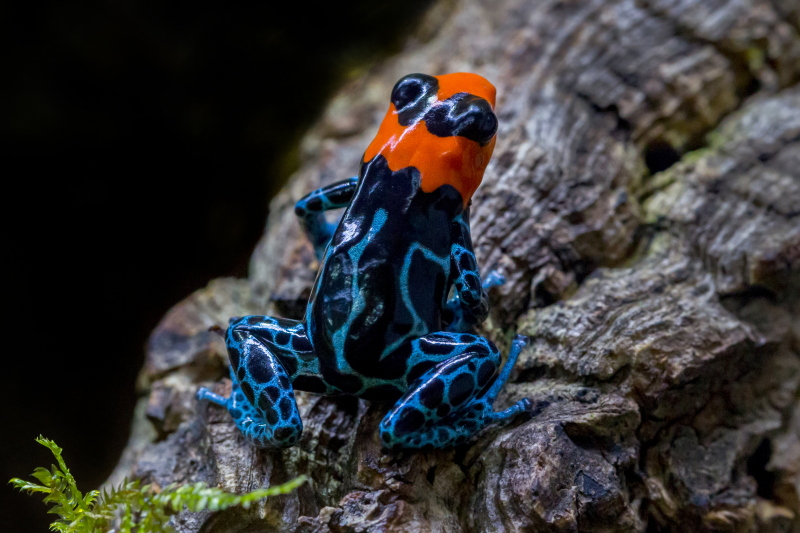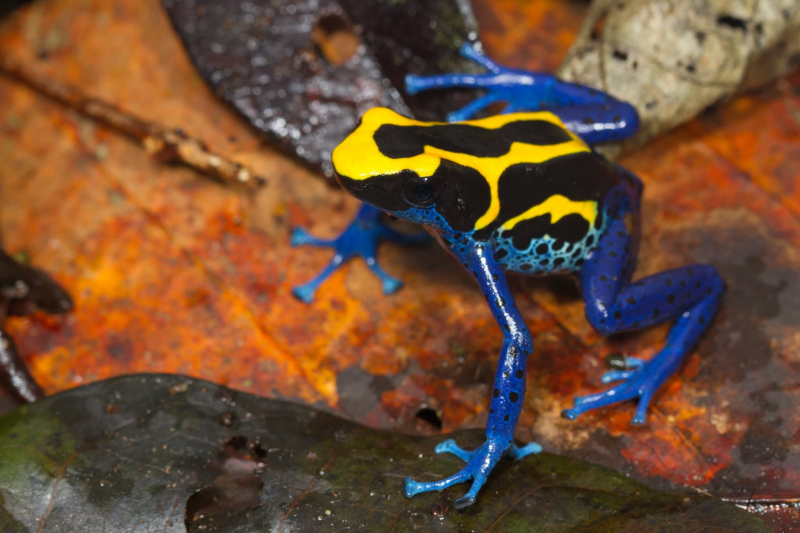Poison Dart Frog
As the name suggests, poison dart frogs are brightly coloured frogs that secret poison from glands on their skin. This poison is highly toxic and causes heart failure if it enters the body in large amounts. Brightly colored poison dart frogs, which can be yellow, copper, gold, red, blue, green, or a combination of those colors, are notoriously toxic, and their eye-catching coloring serves to deter predators. They differ from other frog species in that they are active during the day rather than at night.
Due to the Native Americans' usage of their toxic secretions to poison blowdart tips, these amphibians are frequently referred to as "dart frogs". However, only four of the more than 170 species - all of which are from the genus Phyllobates, which is distinguished by the comparatively large size and high levels of toxicity of its members - have been identified as being utilized for this purpose.
With a few arboreal species, the amphibian is primarily terrestrial, and habitat loss has increased food competition and the risk of predation, bringing these frogs closer to extinction. Scientists also found chytridiomycosis, a bacterial disease found in amphibians, to have killed thousands of animals each year, which resulted in the extinction of some species.












